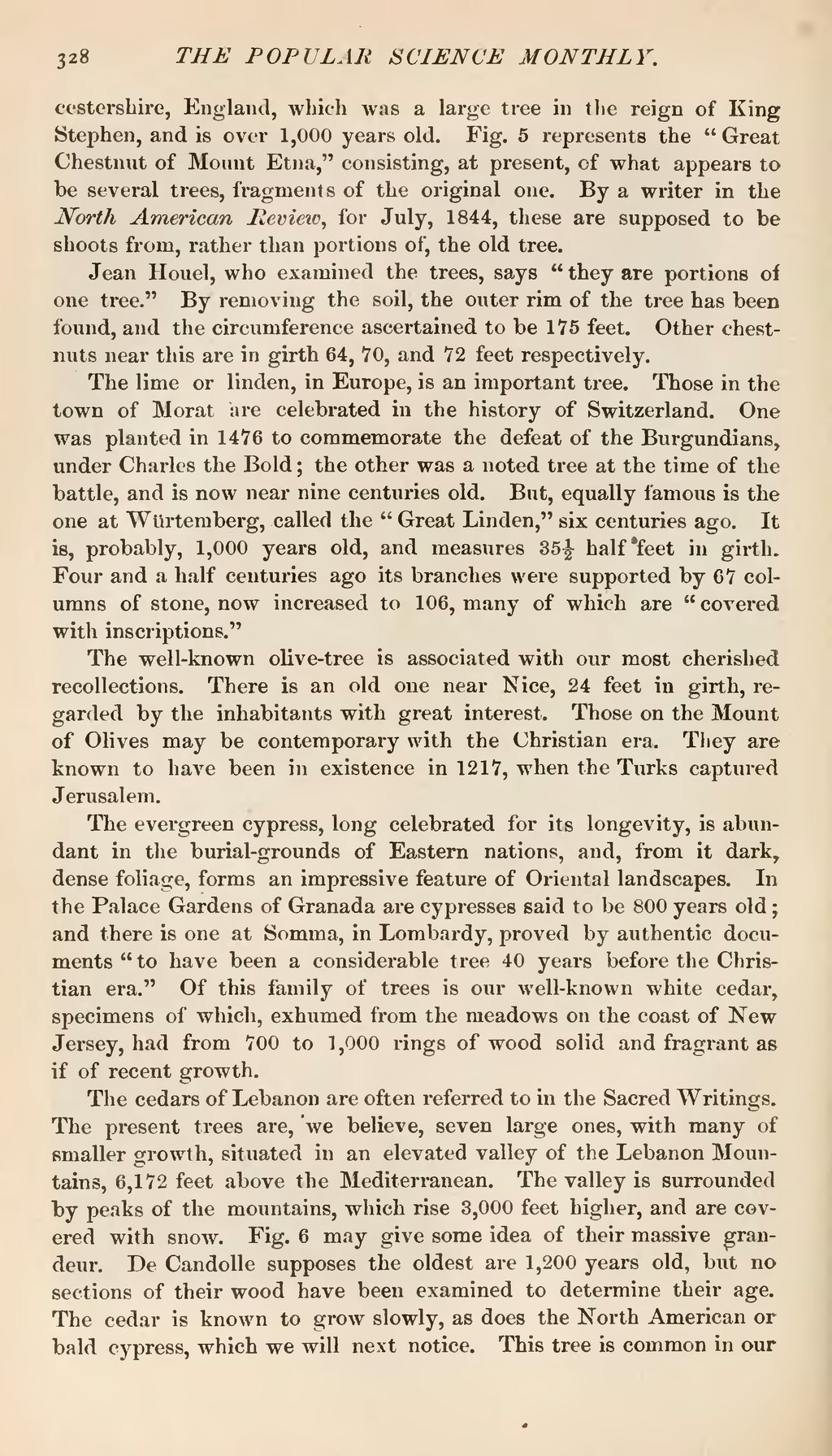cestershire, England, which was a large tree in the reign of King Stephen, and is over 1,000 years old. Fig. 5 represents the "Great Chestnut of Mount Etna," consisting, at present, of what appears to be several trees, fragments of the original one. By a writer in the North American Review, for July, 1844, these are supposed to be shoots from, rather than portions of, the old tree.
Jean Houel, who examined the trees, says "they are portions of one tree." By removing the soil, the outer rim of the tree has been found, and the circumference ascertained to be 175 feet. Other chestnuts near this are in girth 64, 70, and 72 feet respectively.
The lime or linden, in Europe, is an important tree. Those in the town of Morat are celebrated in the history of Switzerland. One was planted in 1476 to commemorate the defeat of the Burgundians, under Charles the Bold; the other was a noted tree at the time of the battle, and is now near nine centuries old. But, equally famous is the one at Wilrtemberg, called the "Great Linden," six centuries ago. It is, probably, 1,000 years old, and measures 35½ half feet in girth. Four and a half centuries ago its branches were supported by 67 columns of stone, now increased to 106, many of which are "covered with inscriptions."
The well-known olive-tree is associated with our most cherished recollections. There is an old one near Nice, 24 feet in girth, regarded by the inhabitants with great interest. Those on the Mount of Olives may be contemporary with the Christian era. They are known to have been in existence in 1217, when the Turks captured Jerusalem.
The evergreen cypress, long celebrated for its longevity, is abundant in the burial-grounds of Eastern nations, and, from it dark, dense foliage, forms an impressive feature of Oriental landscapes. In the Palace Gardens of Granada are cypresses said to be 800 years old; and there is one at Somma, in Lombardy, proved by authentic documents "to have been a considerable tree 40 years before the Christian era." Of this family of trees is our well-known white cedar, specimens of which, exhumed from the meadows on the coast of New Jersey, had from 700 to 1,000 rings of wood solid and fragrant as if of recent growth.
The cedars of Lebanon are often referred to in the Sacred Writings. The present trees are, we believe, seven large ones, with many of smaller growth, situated in an elevated valley of the Lebanon Mountains, 6,172 feet above the Mediterranean. The valley is surrounded by peaks of the mountains, which rise 3,000 feet higher, and are covered with snow. Fig. 6 may give some idea of their massive grandeur. De Candolle supposes the oldest are 1,200 years old, but no sections of their wood have been examined to determine their age. The cedar is known to grow slowly, as does the North American or bald cypress, which we will next notice. This tree is common in our
